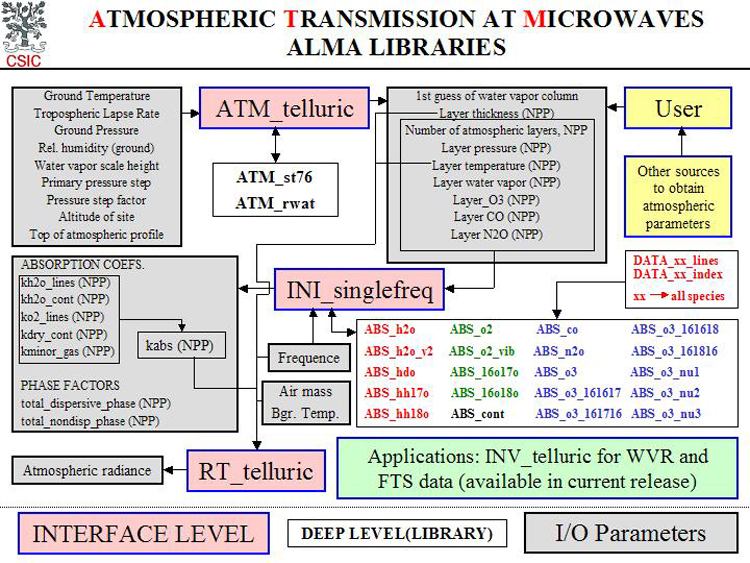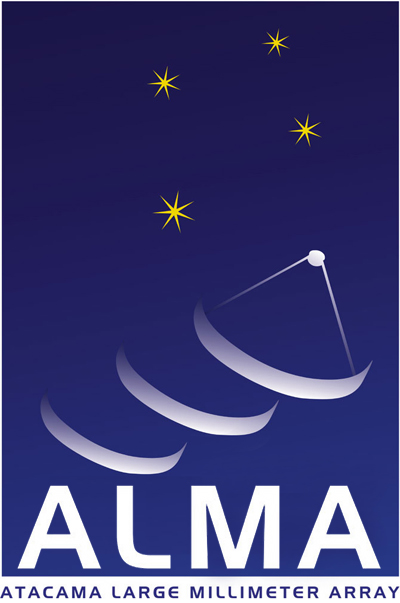Juan R.
Pardo-Carrion
ATM libraries for the ALMA project
Context: A basic need of the ALMA software is a library to calculate atmospheric opacity and phase, and to perform radiative transfer calculations. The reason for this is that such a library will be needed by different parts of the project, such as the calibration, evaluation of site conditions, phase correction, preparation of proposals, scheduling decisions, etc... We have to anticipate all possible uses and build a library with a structure that allows an easy "plug-in" for developers of other pieces of software in the project.
Background: The work is based on the Atmospheric Transmission at Microwaves (ATM) model. It started to be developed by J. Cernicharo for use at IRAM observatories. Later on, the model was updated and new features added by J.R. Pardo as part of his thesis. A series of Fourier Transform Spectroscopy (FTS) spectroscopy experiments were conducted at the Caltech Submillimeter Observatory (CSO) on the Mauna Kea summit that allowed to refine the model in the submillimeter frequency range. The main results of these studies and developments have been already published (papers 16 and 24 in this publication list). The resulting software package has been the starting point for developing the ATM library which present structure is described here.
Development: The present software development is being done by the Instituto de Estructura de la Materia (IEM, Madrid) as part of the ADACE (ALMA Data analysis Centre) group.
Library Structure: Presently there are three main routines that are the only ones aimed at interacting with other parts of the ALMA software. They are the interface level. Many other routines are called by those of the interface level but are kept independent of them. They are the internal level. For development purposes an automated test has been designed that makes use of all parts of the interface level. The three routines in the interface level are:
ATM_telluric.f returns the atmospheric profile (T,P, number densities of each gas...) from some basic parameters usually available at ground-based observatories, such as the temperature and pressure at the ground, the type of atmosphere,... This routine can be skipped if the user has his own atmospheric profile obtained form other sources.
INI_singlefreq.f returns the absorption coefficients and phase factors for different gases in the different atmospheric layers considered.
RT.f performs forward radiative transfer calculations for requested frequencies, using the information returned by INI_singlefreq and the temperature profile. The developer of other parts of ALMA software can call INI_singlefreq and RT inside loops to make spectral calculations of frequency bands of interest, such as water vapor radiometer bands or astronomy bands.
There is an application developed as an example. It uses the three main routines of the interface level:
INV_tellruic.f performs water vapor retrievals from water vapor radiometer measurements. This a particular application that makes used of the three "fundamental" functions listed above. We consider it interesting for now as it allows to explore the potential of water vapor radiometry for ALMA calibration.
The present structure of the library is the following:

To acces the library please click here (you will need to be a registered user).

